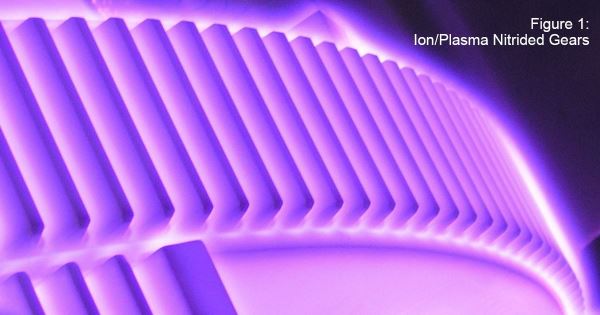posted
On Monday, August 19, 2019
in
Blog
Tribological Performance-Enhancing Surface Treatments for Improving Durability of Engineering Components
Many engineering components made of ferrous or titanium alloys fail by extensive wear or fatigue when subjected to friction and contact stress during their operation. Therefore, performance of gears, shafts, crankshafts and many other parts can be improved when a proper surface treatment is applied. Engineering the surface of those components is the designer’s most important task [Ref. 1].
Processes, such as plasma or gas nitriding and carburizing, are often used when tribological performance enhancements are desired. Predicting the behavior of specific components under working conditions is possible when the contact/Hertzian surface stress can be estimated and the data representing the behavior of the specific material under such conditions are available [Ref 2].

Modern nitriding methods, such as plasma/ion and controllable gas nitriding or nitrocarburizing, have a simple advantage over traditional gas carburizing (atmospheric or vacuum) since they are carried out at much lower temperatures. Therefore, very often nitriding can be applied to finished components.
Plasma method is used when the treatment should be limited to a specific, critical surface and the other areas of the part such as threads or key ways should stay soft. This is often the case with gears where plasma treatment is effectively used, see Fig. 1.
Tribological Behavior of Nitrided and Carburized Steel
Failure of the mechanical parts subjected to rotation and friction can occur by different mechanisms and the most common is wear by friction. If the surface hardness is insufficient to resist friction, galling or seizure may result. Therefore, reducing wear by friction is critical in preventing the other failures.
Surface hardness of nitrided or carburized components is significantly increased compared to the treated steel, and the residual compressive stress is generated through the entire thickness of such layer. Those properties are desired in many applications.
It is important to compare tribological behavior of the same low-carbon and low-alloy 1HGT steel after two different thermochemical treatments, nitriding and carburizing, see Fig. 2 and 3. The tests were carried out at the Hertzian Stress (Unit Load) range 50-600 MPa.
.jpg)
The samples from both treatments exhibited linear wear rate at 50-200 MPa unit load and the wear was similar after nitriding and carburizing, and it had a linear character. However, the wear intensity (µm/min) measured under the same unit load was about 50% smaller after nitriding. At 600 MPa, samples after both treatments went into seizure.
Conclusion
The results of the tribological studies strongly suggest that for many engineering components, the application of nitriding may be more beneficial than carburizing since the nitrided layer had better wear properties than the carburized layer despite the fact that the layer was about four times as thick.
References
1. E. Rolinski and M. Woods, Engineering the Surface, Industrial Heating, March 2019, pp. 28-30.
2. J. Senatorski, J. Tacikowski, E. Rolinski and S. Lampman, Tribology of Nitrided and Nitrocarburized Steels, ASM Handbook Vol 18, Friction, Lubrication and Wear Technology, ed. G. Totten ASM International, 2017, pp.638-652.
Figures
1. Plasma/ion nitriding of large gear.
2. Linear wear depth vs. time of friction at different unit loads of nitrided layer produced in 18HGT (0.18 wt. % C, 0.25 wt. % Si, 1.15 wt. % Cr, 0.1 wt. % Ti) steel by controlled gas nitriding to produce 0.16 mm total case depth at 530° C for 6 hours. Linear wear at 50-200 MPa was 5.8-11.6 µm and wear intensity was 0.024-0.072 µm/min. S-seizure. Adopted from J. Senatorski et al. [Ref. 2].
3. Linear wear depth vs. time of friction at different unit loads of carburized layer produced in 18HGT steel by gas carburizing to produce 0.95 mm total case depth at 930° C for 6 hours, quenching and tempering at 180° C. Linear wear at 50-200 MPa was 5.4-10.8 µm and wear intensity was 0.0375-0.083 µm/min. S-seizure. Adopted from J. Senatorski et al. [Ref. 2].
- carburizing
- edward rolinski
- gears
- ion nitriding
- nitriding
- plasma nitriding
- wear resistance